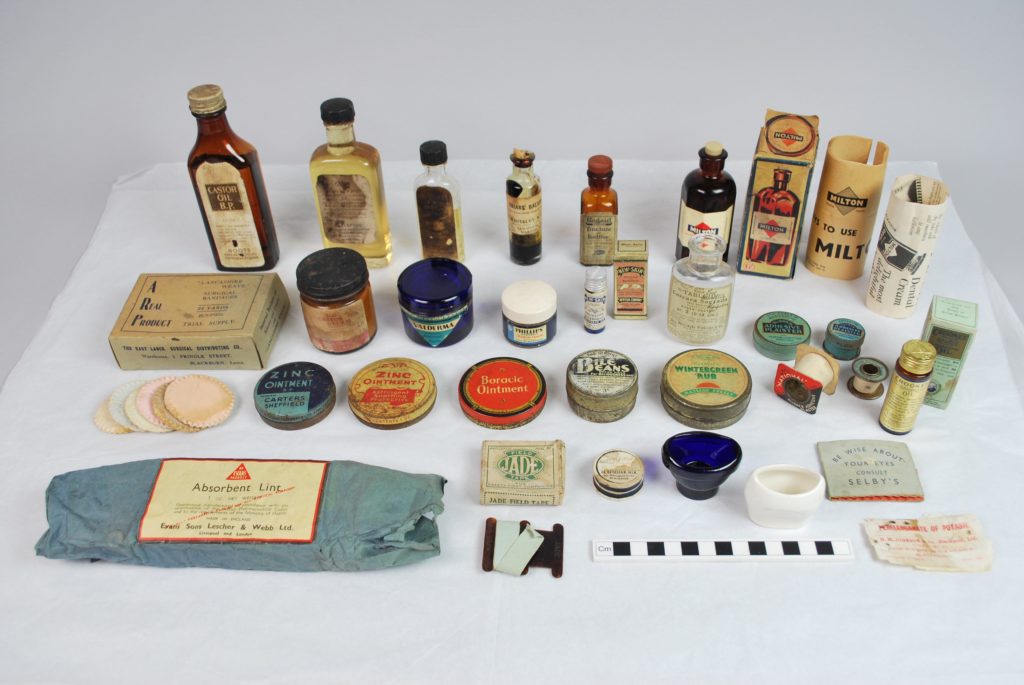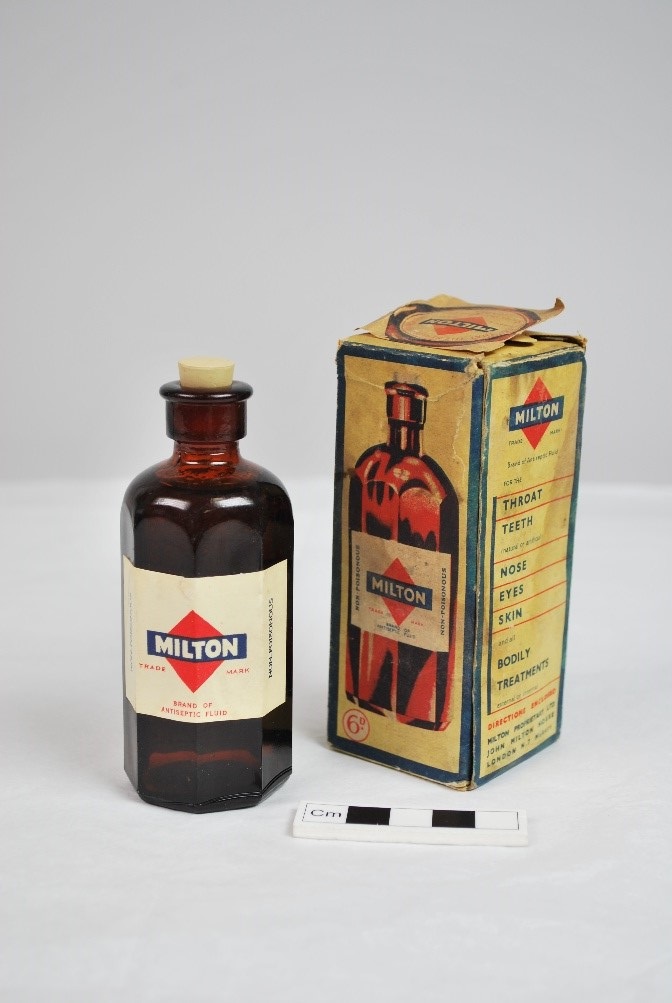A medical kit from the 1900s has turned out to be quite a chemical challenge…

These objects are a collection of home use medical items from the first half of the 20th century. Many of these ingredients and treatments, like sticking plasters, glycerine, and castor oil, are still familiar to us. We might know them from our own medical cabinets or from those of our parents and grandparents, and they feel quite safe and stable to us in everyday life. However, some of these objects and their contents have been around for nearly 100 years, and as they decompose they can give off gases or solvents that can cause reactions in other nearby materials. Some objects, like the ‘New Skin’ remedy for cuts, contain surprising ingredients like cellulose nitrate – also known as gun cotton for its explosive properties!

In our medicine cabinets glycerine is a familiar throat soothing remedy, but in the lab it is a “hygroscopic, trihydroxy alcohol (HOCH2CHOHCH2OH) formed by alcoholic fermentation of sugars, incompatible with strong oxiders and capable of decomposing into aldehydes and ketones”. This is a bit of a problem when the bottle of glycerine in this case is surrounded by strong oxidisers in the other jars and bottles in the first aid kit. In fact, this had caused the glycerine to become yellow and expand so much it forced its way out of the bottle. Luckily not too much harm was done and the decomposing glycerine was carefully cleaned off the nearby bottles it had covered.
Some of the more stable objects from this collection will be on display in the upcoming exhibition A Picture of Health, which will open this Autumn. Now we know what chemicals are present, we can keep them away from any other sensitive objects that will also be going into the exhibition. We have also been able to predict which contents could react strongly if they were spilled and mixed together, so we can store them safely for the long term.
This content is viewable by members only. Login or sign up to get access.

